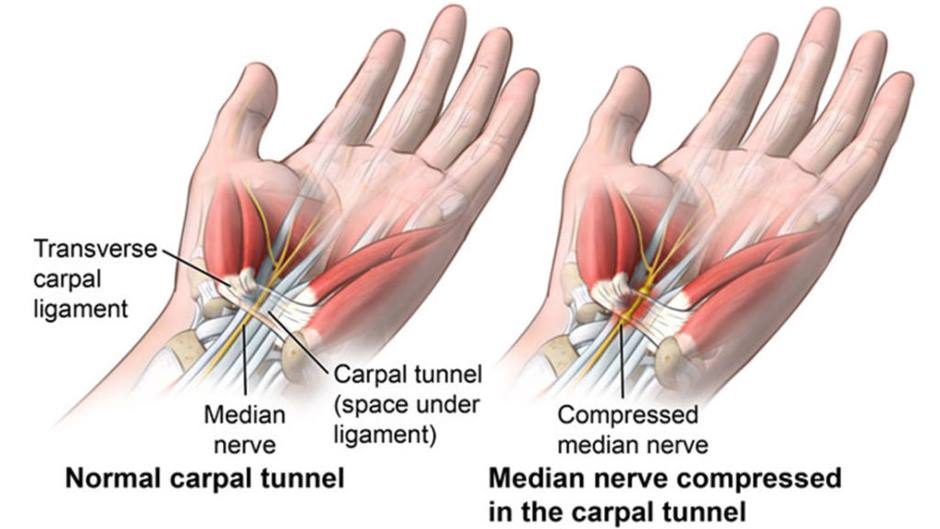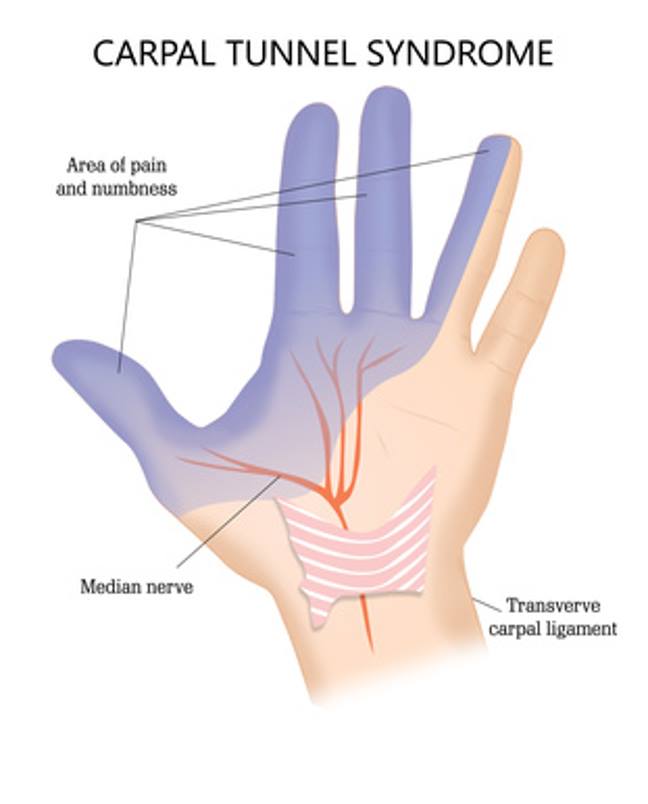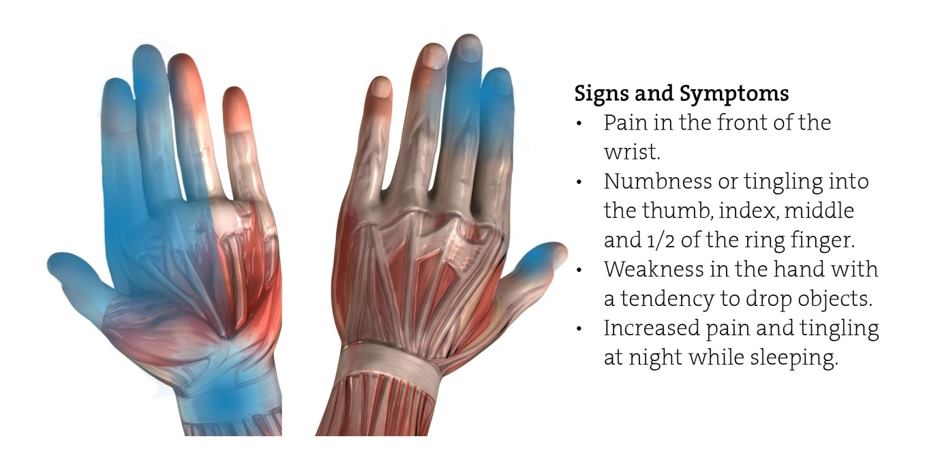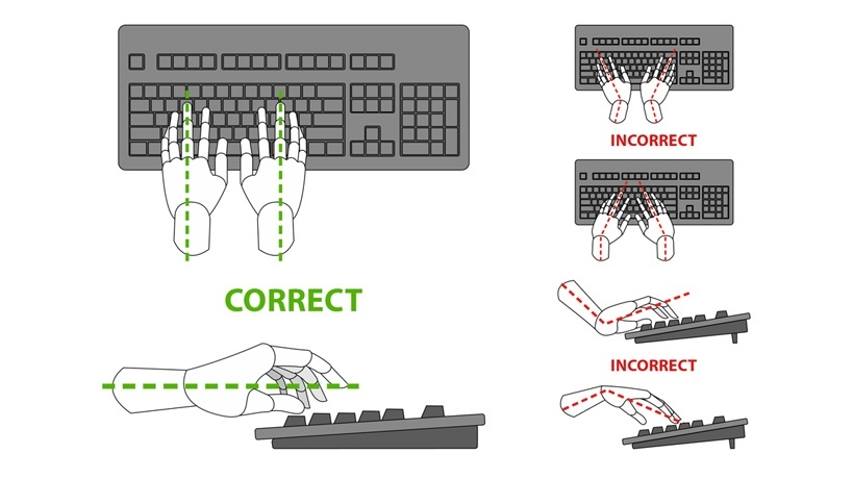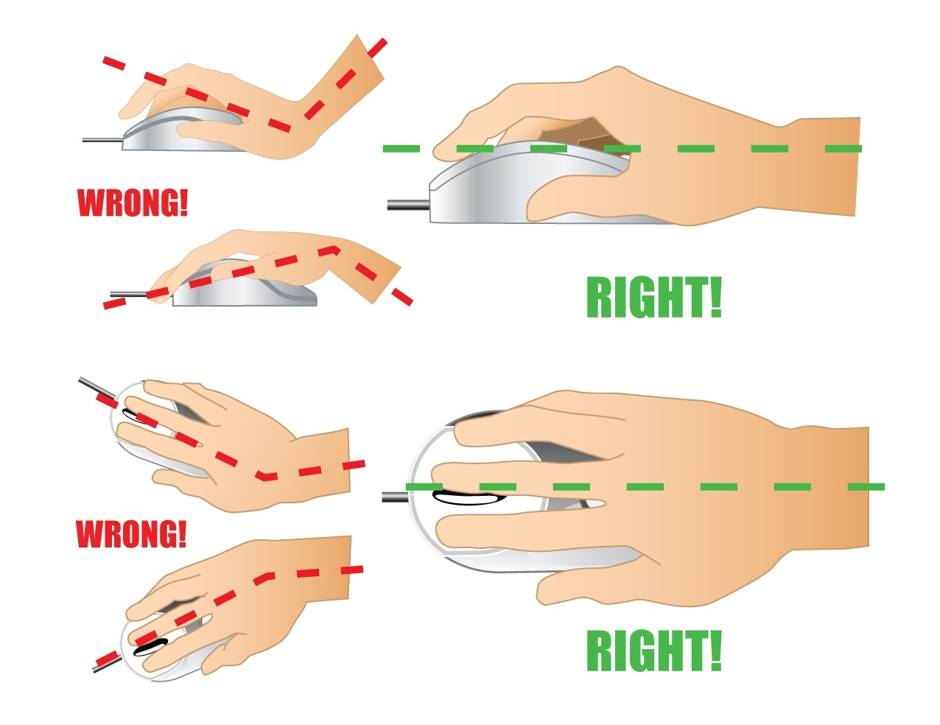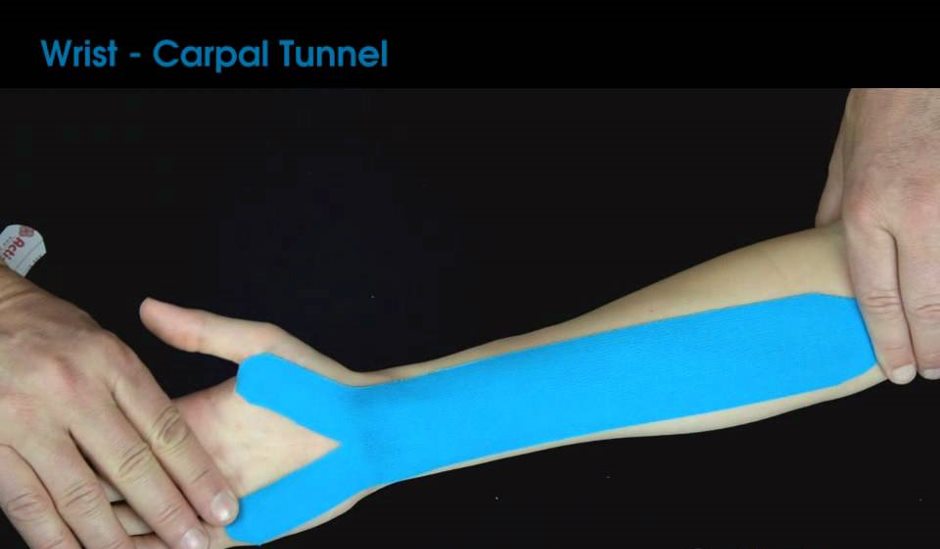Carpal Tunnel Syndrome
Carpal tunnel syndrome is a common condition that occurs when one of the major nerves to the hand — the median nerve — is squeezed or compressed as it travels through the wrist.
This condition occur when the tunnel becomes narrowed or when tissues surrounding the tendons swell, putting pressure on the median nerve.
This abnormal pressure on the nerve can result in pain, numbness, tingling, and weakness in the hand.
Causes –
Most cases of carpal tunnel syndrome are caused by a combination of these factors:
• Repetitive hand use – Repeating the same hand and wrist motions or activities over a prolonged period of time may aggravate the tendons in the wrist, causing swelling that puts pressure on the nerve. For e.g. housewives or working prolonged in kitchen.
• Hand and wrist position – Doing activities that involve extreme movements of the hand and wrist for a prolonged period of time can increase pressure on the nerve.
• Pregnancy – Hormonal changes during pregnancy can cause swelling & pressure on the nerve.
• Heredity – The carpal tunnel may be smaller in some people or there may be anatomic differences that change the amount of space for the nerve—and these traits can run in families.
• Health conditions – Diabetes, rheumatoid arthritis, or thyroid gland imbalance are conditions that are associated with carpal tunnel syndrome.
• Injury/Micro traumas – Severe injury (e.g. fracture) or micro traumas can also be one of the cause.
• Occupational – People working for long hours on laptops/computers, painters, machinery workers, etc.
Symptoms –
These may include:
• Numbness, tingling, burning, and pain—in the thumb and fingers (index/middle/ring)
• Occasional shock-like sensations that radiate to the thumb and fingers
• Swelling near the wrist area
• Pain or tingling that may travel up the forearm
• Weakness and clumsiness in the hand—this may make it difficult to perform fine movements such as buttoning your clothes
• Dropping things—due to weakness or numbness
In most cases, symptoms begin gradually & many patients find that their symptoms come and go at first. However, as the condition worsens, symptoms may occur more frequently or may persist for longer periods of time.
Night-time symptoms are very common. Because many people sleep with their wrists bent, symptoms may awaken you from sleep.
During the day, symptoms often occur when holding something for a prolonged period of time with the wrist bent forward or backward, such as when using a phone, driving, or reading a book.
Many patients find that moving or shaking their hands helps relieve their symptoms.
Treatment –
Resting from the aggravating factors is important. Education and awareness about the symptoms and what positions or activities potentially cause carpal tunnel syndrome & how to prevent them is important.
A night-time wrist splint is beneficial to eliminate wrist bending and therefore carpal tunnel symptoms.
Tendon gliding exercises to reduce swelling of the little adhesions that can form in the area due to swelling.
Neural glides to relieve any tension coming from arm or neck that affects median nerve in wrist.
Carpal bone mobilisation to open (stiff) carpal tunnel.
Stretches to improve muscle & soft tissue extensibility.
Strengthening exercises to improve strength & gripping.
Deep/ soft tissue kneading to release the tension/knots build up in soft tissues.
Ultrasound therapy helps in, reducing swelling, pain, tenderness & aggravates healing process.
Kinesiology tapping to help uplift the pressure causing on the nerve & give smoother, pain-free movement.
IFT currents for pain management.
Cold compression’s to prevent/reduce swelling & hot compression’s to ease out pain/tenderness.
In most severe cases people have to undergo surgery. In that case we help you manage your surgical scar to prevent any complications & recommend specific exercises to help you regain mobility and flexibility after surgery.
Do’s and Don’ts of Carpal Tunnel Syndrome –
Reduce your force and relax your grip
Every 15 to 20 minutes give your hands and wrists a break by gently stretching them
Avoid bending your wrist to extremes. A relaxed middle position is best
Improve your posture & ergonomics while working
For further information, reach out to us at –
Pooja Physiotherapy & Health Care Center
Blk 77 Indus road #01-521S’160077.
Call now @ 6384 5452 or Whatsapp @ 8322 3371 or
Drop an email at info@physiopooja.com.sg
